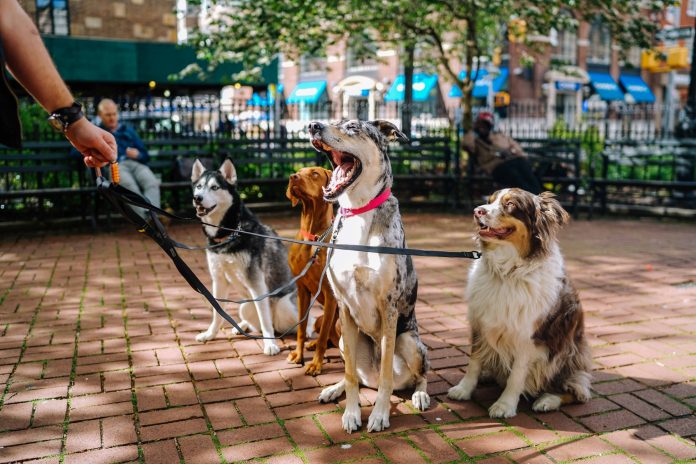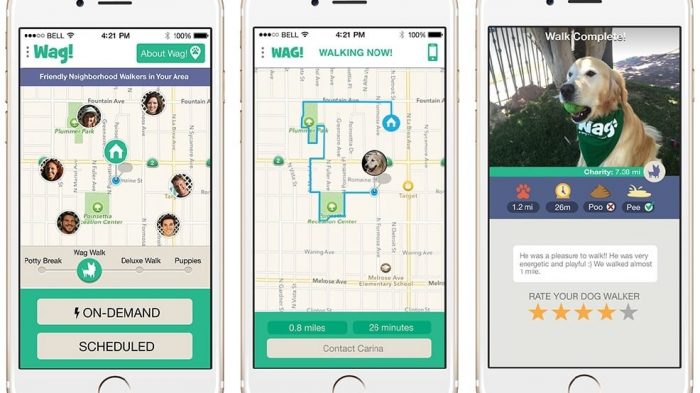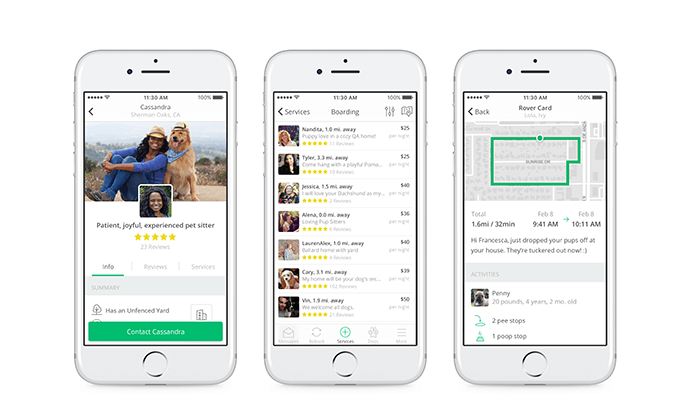The reason behind the development of an application is to solve a particular problem. Therefore, you must ensure that you understand the issue at hand and analyze the solution in mind. If the solution half-way solves the problem, your app will not be as useful. For apps like Rover and Wag, you’ll need to create 2 or 3 user interfaces; the dog walker, the dog owner, and administrator login. The features of the app will depend on how you choose to solve the problem. For example, if you feel a locator will solve the problem of walkers being dishonest about walking dogs, then feature a location tracker on the app. So let’s learn from the best and create a better pet care platform.
What Is a Dog Walking App and How Do They Work?
Just like Uber and Airbnb, dog walking apps exist. Such apps are used by those interested in walking pets to get gigs posted by those in need of pet walking services. The apps have primarily eliminated the hassle of finding such gigs individually, which most times, is as hectic as finding a full-time job.
These apps have also made it easy for people to earn extra cash that can be saved for things like emergencies, debt payments, or luxury spending. They may not make you six figures a year (they can hardly make four), depending on the app, but the extra cash is always worth it.
Canine walking apps are almost similar in terms of how they operate, and their main difference lies in the user interface and features. Basically, a pet walking app will expect you to take the following simple steps:
- Download the application on your mobile phone
- Sign up for an account
- Pass a test or go through some training
- Pay for a background check that will be done by the app administrators
- Setup your profile by adding a short bio and profile photo
- Once there’s a client request in your area, you’ll receive a notification
- The app will then give you the location and directions to the client’s house or pick up point
- Get the dog and walk it for the specified duration while the app tracks you with GPS
- End your walk when it’s time, return the dog, and give a report
The dog walking platform will be pretty easy to use, so you do not need to be a tech guru to start getting gigs.
Comparing Rover vs. Wag: What’s the Difference
Two of the highest rated canine walking apps are Rover and Wag, and as much as they have a lot of similarities, some differences are hard to miss.
1. Rover: Has full insurance package for users
Wag: Wag offers no insurance
2. Rover: Set your service amount
Wag: Use amounts set by Wag administrators
3. Rover: Charges depending on expertise
Wag: Pays depending on duration spent
4. Rover: Very popular with a lot of floating gigs
Wag: Popular but sometimes lacking consistent gigs
5. Rover: Background check costs $10
Wag: Background check costs $25
6. Rover: Does not ask for recommendations as they are compulsory during account creation
Wag: Asks for emails of referees to confirm your skills and performance
Rover is mainly for dog sitting gigs and other work at home jobs while Wag majors on pet walking. Both these apps are legit and good for pet walking gigs.
Things to Consider While Using Dog Walking Apps
As you decide to use canine walking apps for these side hustles, it’s important to consider a few things:
- How much they pay against duration of service and see if it’s worth your time
- If they appear strict with things like background checks, they must be legitimate
- Do they have a lot of gigs or you’ll spend most of your time clicking the “refresh” button?
- Are there tips, incentives, or hidden fees that affect the overall amount made
Alternatives to On-Demand Dog Walking Apps: What Other Options Are There?
- Start your area website to display your services: launch a personal website or blog and talk about your passion for dog walking. Start tutoring people on walking skills. Writing about your expertise gives you credibility, and you’ll be lucky to get a few readers or viewers who would want to get your services.
- Go old school and print posters: It doesn’t always have to be too technical. Be old school. Take a cute photo of you and your puppy and print it in a poster with a caption describing your services and contact details. Hang the posters near apartments where there are several dog owners and cross your fingers for luck.
- Request for referrals from previous clients: You may choose to make not much effort in building a website or printing posters and ask those you’ve previously worked for to refer your services to their family and friends. If you are new at dog walking, talk to friends and even family members and tell them about your new venture. Let them know that you’ll highly appreciate their referrals. Note that referrals go a long way; whether online or offline.
- Visit dog parks and network: When walking your dog, you may meet other pet owners with theirs. Whether it’s on the street or dog parks, say hello and find your way into a conversation with them. Don’t seem creepy; simply talk about your dog and ask them about their dog. Talking about yourself helps them feel like they can trust you, but don’t tell too much as you may bore them. Say a few things and ask them a couple of questions. If they talk about their busy schedule, ask them if they would like a dog walker, then sing about your praises to them.
Whichever method you choose to use, keep in mind in the present technological era, it’s getting more difficult for dog owners to find time for their pets due to tight work schedules. On-demand dog walking apps helps dog owners to find dog walkers as fast as possible. That’s the reason why digital solutions for dog walking have appeared.

















































